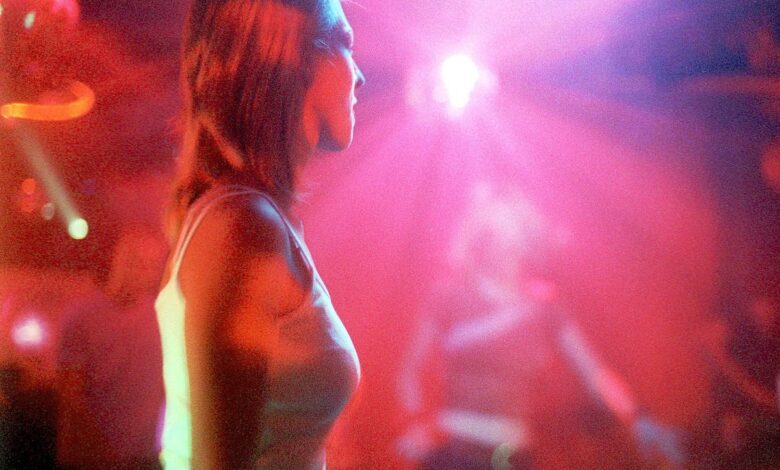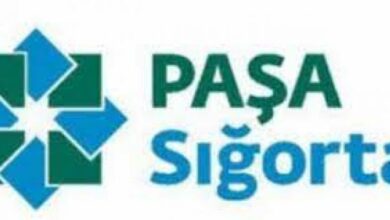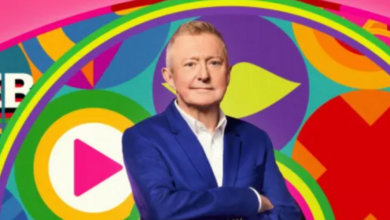‘Through the crush of dancing limbs, I forgot myself’: How raving helped me overcome my trauma

I wasn’t what you’d call a raver. Growing up, my friends and I spent our Friday nights in London at Effra Social or The Hawley Arms, listening to Jimi Hendrix, Arcade Fire and The Strokes; head-banging and playing air guitars while debating over the true meaning of the word “punk”. I dreamt of sticky pints of lager. Alex Turner’s accent in “Mardy Bum”. One day seeing Lana Del Rey perform “The Greatest” live. I found lyrics and guitar solos cathartic. I liked gigs and Hungry Heart nights. I didn’t like the sound of sweaty underground discos, or heady caverns where glow-in-the-dark goggles bounced to repetitive thumping sounds.
Back then, raving seemed like something “cool” people did. People with rainbow-coloured hair clad in holographic unitards and shield sunglasses. People who devoured psychedelic drugs in ominous basements and perforated their eardrums while still looking sexy and bopping to EDM. People who were light and easy-going, who melted into pleasure and hedonism without feeling the need to over-analyse everything. People who were not like me.
I grew up with panic disorder and was diagnosed with bipolar disorder at the age of 24, spending weeks in a psychiatric hospital. I suffered from terrifying psychotic episodes, which involved seeing demons and axe murderers. At 27, I broke my spine and shattered my entire left foot after falling through rotten floorboards in an abandoned mental asylum. I know, I know: you couldn’t write it. I was left with severe PTSD. I found two-storey buildings and taking the tube in rush hour triggering. Put crudely, I was likely to walk into a rave, freak out over the pounding bass, roving jaws and claustrophobic dance floor, have a panic attack and get stretchered out in a manner so “vibe-killing” and mortifying that I would never be invited back again. Instead, I found a mysterious alchemy that would transform me.
In 2021, my friend May took me to my first rave. I went because I had nothing else to do that night and May’s friends seemed friendly. The location wasn’t far from my home and I secretly clung to the security of knowing I could escape when I needed. I would go to the pre-drinks, venture to the warehouse and then slip away into the night with my dignity intact. I would dip my toe in the rave.
A few hours later, something magical was happening. I was in front of iridescent DJ decks, bathed in multi-coloured strobe light. My hands were raised above my head, my eyes tilted up towards a twinkling disco ball. I didn’t need to focus on dancing, I was taken over naturally. I didn’t need to worry about talking to anybody while straining to listen over the speakers, because everyone was transfixed, silent. Hypnotically absorbed. It wasn’t triggering but exhilarating. A feeling of euphoric wholeness. Togetherness without expectation. I was flooded with endorphins from the movement, inspired and awakened by emotive techno that touched chords deep within me. Worries and anxieties floated across my mind, and as I moved to the pulsing beats, those thoughts re-ordered themselves, effortlessly, dimming in harshness, waning in severity. I felt like something was clearing. I stayed rooted to that spot all night, until dawn spilled through the windows and faces glittered with the early morning. I took the No 29 bus home, entranced. Over the days that followed, my mind was clearer and calmer than it had been in months.
After that first rave, I started going to them frequently, re-experiencing that rush of mental exhilaration. In the summer of 2022, the events company I run hosted a series of Sacred Raving Circles, founded by Find Your Groove to bridge the gap between wellness and raving. These took place at the beginning of the week, in the afterglow of weekend raving antics. We heard story after story of how dancing had therapeutic effects. About how raving was meditative, an escape from the noise of life, an experience that enabled people to see their problems from entirely new perspectives. And it wasn’t just us. Elsewhere there were signs that raving was being harnessed as a powerful therapeutic tool. Raves were being renamed “techno therapy sessions” and “healing jams”. Yoga sessions became “yoga raves”. Martine Kirkbride even founded Danceitation, an event organisation combining dance and meditation to create an “explosive mind-body-rave experience”. It was no longer possible to separate wellness and raving.
I wanted to understand why I found these events so therapeutic. I unearthed endless confirmation of the overwhelming mental benefits of raving. I learnt that melodic electronic and deep house music causes a release of pleasure hormones such as dopamine. They aid focus and concentration, and explained the trance-like clarity I experienced at that first rave. I discovered that binaural beats, which occur in techno, reduce sympathetic nervous system activity, creating a state of relaxation and heightened mood (a process known as auditory driving). Exhaustive dance, flickering lights and rhythmic drumming produce altered states of consciousness, raised awareness and feelings of clarity, peace and euphoria. Pair all of this with the fact that a good DJ will be adept at manoeuvring a crowd’s emotional state, and you’ll understand why I felt so ecstatic when I left that rave.
At the end of the summer, we took the Sacred Raving Circle to Warm Up festival in Hertfordshire. On the last night, I danced at the main stage surrounded by feather boas, alien sunglasses and floating jellyfish. I was illuminated by kaleidoscopic lasers and starlight. Deep in the pine forest with all my friends, watching the crowd ripple to waves of a remixed Sasha song, something occurred to me. It was impossible to measure raves by quantifying individual experiences. These events were characterised by a profuse collectivity, and it was this overwhelming sense of community that allowed me to move beyond myself, to transcend my myopic perspective. Through the crush of dancing limbs, amid hundreds of swirling, intermingling bodies, I forgot myself. This was the only time I forgot. Shattered foot, broken spine, PTSD, the exhausting undulations of mania and depression. For a few hours, it was all gone. I was not me but “us”. A cohesive crowd. A floor of spirits. To borrow from Faithless, this is why raves are where I “heal my hurts”. This is why they became my therapy.





